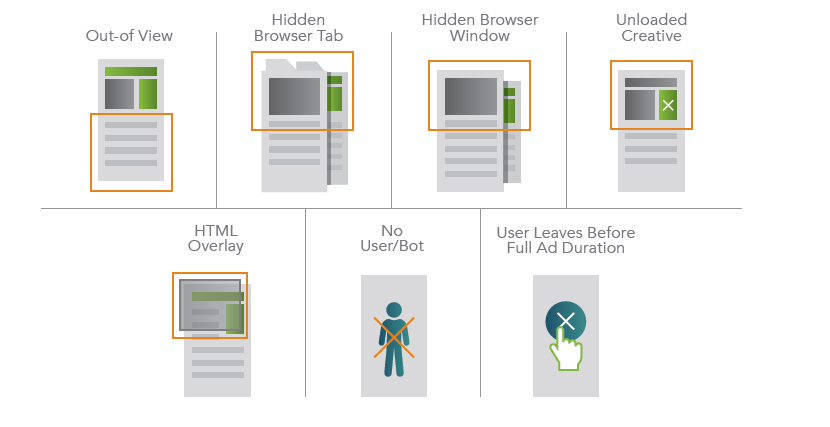Defining a View: The Impact of Evolving Video Dynamics | FreeWheel
 The FreeWheel Council for Premium Video Europe (FWCE) have released a paper detailing their positioning on 'Defining A View' which looks at the Impact of Evolving Video Dynamics.
The FreeWheel Council for Premium Video Europe (FWCE) have released a paper detailing their positioning on 'Defining A View' which looks at the Impact of Evolving Video Dynamics.
As RTÉ Media Sales we are part of this Council which is made up of 14 members from 8 EU countries. The Council was formed in June 2017 to serve the interest of those in the premium video industry through leadership positions, research and advocacy.
 Conor Mullen states, “Most premium environments, like VOD and OTT, follow the MRC and IAB standards, though it’s important to recognise certain environments are unmeasurable by third parties yet they inherently exceed the threshold.
Conor Mullen states, “Most premium environments, like VOD and OTT, follow the MRC and IAB standards, though it’s important to recognise certain environments are unmeasurable by third parties yet they inherently exceed the threshold.
As there are multiple points of entry via more and more platforms, premium video is more viewable than generic digital video: in particular broadcaster VOD, as it is an active choice to view, be it on a TV screen or other platforms as part of a full screen player experience.”
We have included some highlights and key takeaways from the paper below, along with a link to download the full report.
What is the paper about and why is it so significant?
An ad is of no use if it is not visible to the users. So, serving an ad is not enough for a successful campaign; it needs to be guaranteed to have been seen by a viewer - i.e. content is available in a viewable area of the browser window and fulfilling the basic criteria for an ad to be considered viewable such as the percentage of pixels and the length of time the ad is in-view.
Ad viewability came into existence due to advertisers starting to complain and requiring proof about their ad being viewed by targeted users. The only solution was to calculate or measure the viewability of an ad being rendered.
In 2015, the MRC (Media Rating Council) came up with a standard definition: 50% of a video ad unit should be in view for two consecutive seconds. However, with changing viewing habits, increased fraudulent activity, and technical limitations, this baseline definition has become insufficient for many.
This thought leadership piece was put together following multiple requests from our members on better defining a video view. It represents the second collective output for the FWCE in its first year and is built on shared market-leading research, knowledge and expertise.
The paper explores the video viewability landscape, navigating the complexities of multiple standards, verification methods and offerings to establish whether it’s time to evolve the existing industry baseline standards.
Looking at the wider digital and premium spheres, this paper also reveals why high-quality environments are a more sensible investment for not only views but also effectiveness.
So, what is a view?
The IAB defines viewability as “an online advertising metric that aims to determine whether an ad impression had the opportunity to be seen or not.”
Minimum thresholds vary depending on the platform and agreed terms between buyer and seller but the predominant industry standard was established by the MRC in 2015, which specified 50% of a video unit should be in-view for two consecutive seconds. With the rise of fraud, the FWCE thinks it is important to highlight how that impacts whether a view took place, and therefore defines it as: A measurement that gauges whether ads meet minimum industry standards for on-screen visibility and can be seen by genuine viewers.
Examples of Main Viewability Issues:  What are the key takeaways from the paper?
What are the key takeaways from the paper?
- The lack of consistency in terms of defining a video view is causing discord between all stakeholders and hampering the potential of the video ecosystem.
- Though clear and consistent standards are crucial, current viewability guidelines need a revamp to meet the needs of modern advertisers, agencies, and publishers.
- The viewability debate is a major distraction from the adoption of metrics that comprehensively measure success; the industry must also focus on metrics that truly move the needle for advertisers.
- The cost of premium video advertising may be higher than other platforms, but when weighed against its returns — true ad views, engagement, effectiveness and brand-safety assurance — premium video is undeniably more valuable.
How does Premium Video differentiate when it comes to viewability?
The paper details 4 key differentiators for premium environments: - High engagement: premium video drives superior engagement due to quality content and viewing environments - Strong conversions: TV ad campaigns have a proven direct impact on brand lift and sales volumes - Brand safe: content accessed through authentication drives higher user engagement and guarantees human eyeballs. - Ripple effect: premium video isn’t just impactful in isolation; it can also amplify the impact of advertising on other channels. What is the conclusion? Viewability has grown to prominence when it came to determining baseline advertising value, but there’s a need to consider the wider performance picture. The paper concludes with top-line recommendations for brands, advertisers and the broader industry:
- Expand performance measurement: beyond percentage in-view and fraudless traffic, success must be measured against other metrics, such as time in-view, video completion rates, ad recall, and purchase intent.
- Duration should be considered for any new standards, as it is an essential signifier of true exposure, engagement and brand impact.
- Increase video advertising returns by selecting media environments that are proven to offer high view rates and engagement, such as premium platforms like TV, OTT, and VOD.
- Create campaigns that leverage the interrelation between channels, including TV’s ability to boost online interaction — advertising should be omnichannel.
- Ensure campaign reporting is accurate and fraud-free by working with certified third party measurement providers.
- Measure true value: analyse ROI based on brand lift and business outcomes; the cheapest option may ultimately have the highest costs.
- User experience is paramount: publishers and advertisers should balance ad loads, frequency and precise targeting to encourage engagement levels (and therefore viewability) to avoid ad fatigue and frustration.
- The industry should collaborate (across buyers, sellers and technology partners) to keep evolving measurement and verification, aligning on standards and consistency to ensure we move the ecosystem forward together.